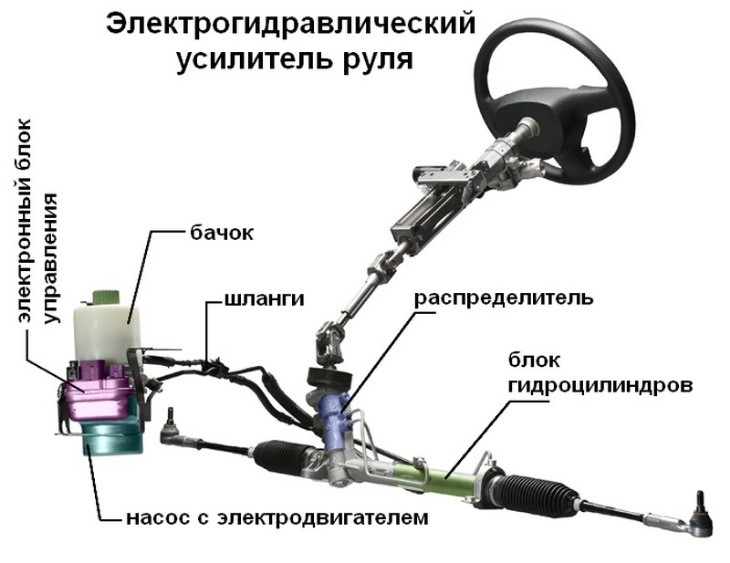
Symptoms of a Faulty or Faulty Variable Valve Timing (VVT) Solenoid
Content
Common symptoms of a bad VVT solenoid include the Check Engine light coming on, dirty engine oil, rough engine idling, and poor fuel economy.
In the early to mid-1960s, American auto giants Chrysler, Ford, and General Motors ruled the streets and highways across the country. With each new car released, the Big Three learned more about engine performance and how to squeeze every ounce of horsepower out of their engines by manually adjusting valve clearances and ignition timing. One of the biggest advances was the development of Variable Valve Timing (VVT), a new system that used advanced (for the time) electronic technology to supply variable electronic signals from the ignition system via a variable valve timing solenoid. Today, the VVT system can be found in virtually all production vehicles sold in the US.
Each car manufacturer has their own unique VVT system, but most of them rely on a fully functional variable valve timing solenoid valve to control the flow of oil into the VVT system when it is turned on. This system is usually activated when the engine is heavily loaded. Some examples of this include when the vehicle is carrying extra weight, driving uphill, or when acceleration is accelerated by throttle control. When the VVT solenoid is activated, oil is directed to lubricate the variable valve timing chain and gear assembly. If the VVT solenoid fails or is blocked, lack of proper lubrication can cause premature wear or complete failure of the timing chain and gear.
There are several other problems that can occur when the VVT solenoid wears out or breaks, which can lead to complete engine failure. To reduce the chance of these serious situations occurring, here are a few warning signs that may indicate a problem with the VVT solenoid. Here are a few signs of a worn or broken VVT solenoid.
1. Check Engine light comes on.
Since modern cars are controlled by the engine control unit (ECU), virtually all individual components are controlled by the ECU. When one part starts to fail, the ECU stores a specific trouble code that lets the mechanic using the scanner know there is a problem. Once the code is generated, it will signal the driver by flashing a warning about the specific zone. The most common light that comes on when the VVT solenoid fails is the Check Engine light.
Due to the fact that each car manufacturer uses different codes, it is very important for the car owner to contact a local ASE certified mechanic to inspect the car, download the code with the correct diagnostic tool, and determine the exact source of the problem. In fact, there are literally dozens of individual VVT solenoid problem codes for every car manufacturer. Once the mechanic has this initial information, he can begin to solve the specific problem.
2. Engine oil is dirty
This is more of a cause than a symptom. The VVT solenoid works best when the engine oil is clean, free of debris, or has lost some of its lubricity or viscosity. When engine oil becomes clogged with debris, dirt, or other foreign particles, it tends to clog the passage from the solenoid to the VVT chain and gear. If your engine oil has not been changed on time, it can damage the VVT solenoid, VVT circuit, and gear train.
To avoid this situation, be sure to change your engine oil according to the vehicle manufacturer's recommendations. A low oil level can also cause problems with the VVT solenoid and other timing system components.
3. Rough idle engine
Normally, the VVT system will not activate until the engine is in a higher RPM or is brought into a carrying situation, such as when driving uphill. However, if the VVT solenoid is faulty, it is possible that it will supply additional engine oil to the VVT gears. This can lead to uneven engine idling, in particular, engine speed will fluctuate when the system is activated. If not checked quickly, this can lead to premature wear of additional engine components. If your engine is unstable at idle, see a certified mechanic as soon as possible.
4. Reduced fuel consumption
The purpose of variable valve timing is to ensure that the valves open and close at the right time to maximize engine performance and reduce fuel consumption. When the VVT solenoid fails, the entire system can be compromised, which can cause the intake and exhaust valves to open and close at the wrong time. As a rule, this leads to a sharp decrease in fuel consumption.
If you notice any of the above warning signs of a failing or faulty variable valve timing solenoid valve, contact your local AvtoTachki ASE certified mechanic. They can inspect your vehicle, replace the variable valve timing solenoid valve if necessary, and keep your vehicle or truck running smoothly.
